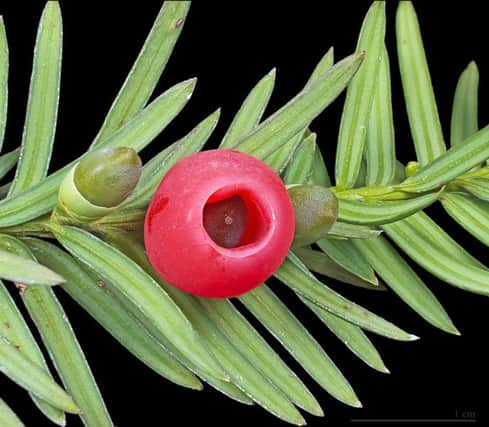The hidden dangers of familiar plants


Chairman Bill introduced speaker Alan Martin to a good audience of 60 members.
Alan, from Catisfield, served in the Hampshire Constabulary and on retirement did a full-time course at Sparsholt Agricultural College – he has developed a repertoire of horticultural talks.
Advertisement
Hide AdAdvertisement
Hide AdMany of the plants pictured in his presentation were photographed during foreign travels with his wife.
We think of plants as benign and part of our everyday life, but Alan began by reminding us that the seeds of apples, pears, apricots and plums are toxic, containing cyanide, and went on to dicuss the habits of some plants world-wide, some familiar, some more exotic.
I like to chew apple pips, but learned that half a cupful could kill me!
In today’s increasingly urban society we have lost the knowledge of antidotes such as dock leaves for nettle stings.
Advertisement
Hide AdAdvertisement
Hide AdSome plant’s poisonings have made headlines in the media such as the death of Georgi Markov, a Russian, who was killed by a ricin shot from the end of an umbrella.
His death was terrible with multiple haemorrhages.
Ricin is made from the castor oil plant, but the poison is removed from castor oil.
Bruce Parry, who presents TV programmes where he lives with primitive tribes for a period of time, tried the ritual hallucinogenic drug made from the iboga root whilst with a tribe in Africa and found it to be very powerful.
For a time, iboga was used in the United States to reset the mind after harm from LSD, but it was made illegal after deaths.
Advertisement
Hide AdAdvertisement
Hide AdCatha edulis is a flowering plant native to the Horn of Africa and the Arabian Peninsula.
The shoots and leaves are collected and sold in leaf wraps in markets and by roadsides.
Among communities in many parts of Africa, khat chewing has a history as a social custom, dating back thousands of years. Khat contains a powerful narcotic, cathonine.
However, it can use scarce water for its production.
It renders the users lethargic and unable to fully function.
Advertisement
Hide AdAdvertisement
Hide AdMossman river grass, which grows in the southern states of the USA, has seed hairs which enter and work their way round the body. It is especially harmful to dogs.
Alan continued with the horror stories, detailing the very disturbing effects of giant hogweed, aconitum, wormwood, deadly nightshade, quinine, death cap mushrooms, betel nuts and many others.
Interestingly, airline pilots are not allowed to drink tonic water for 3 days before flying, and we should take care not to drink large quantities because of the quinine. There goes my gin and tonic.
By now, Alan’s audience was rapt with horror, learning about the malevolent plants that surround us and it was with surprise that, all too soon, his presentation came to an end.